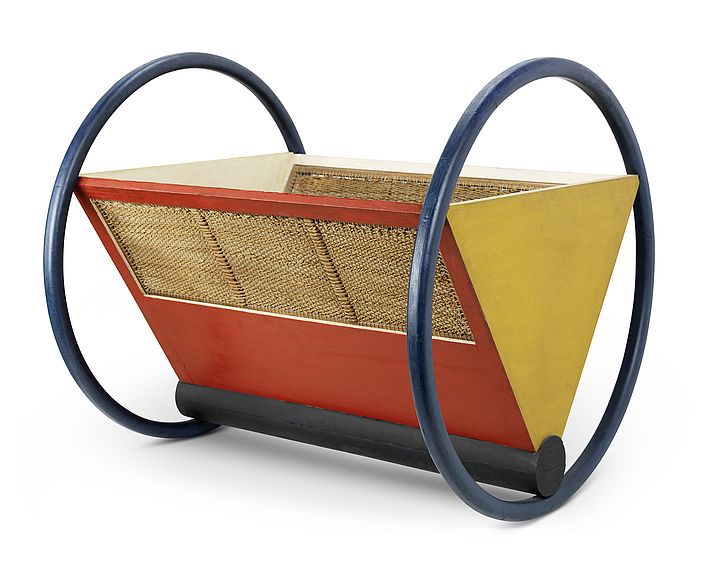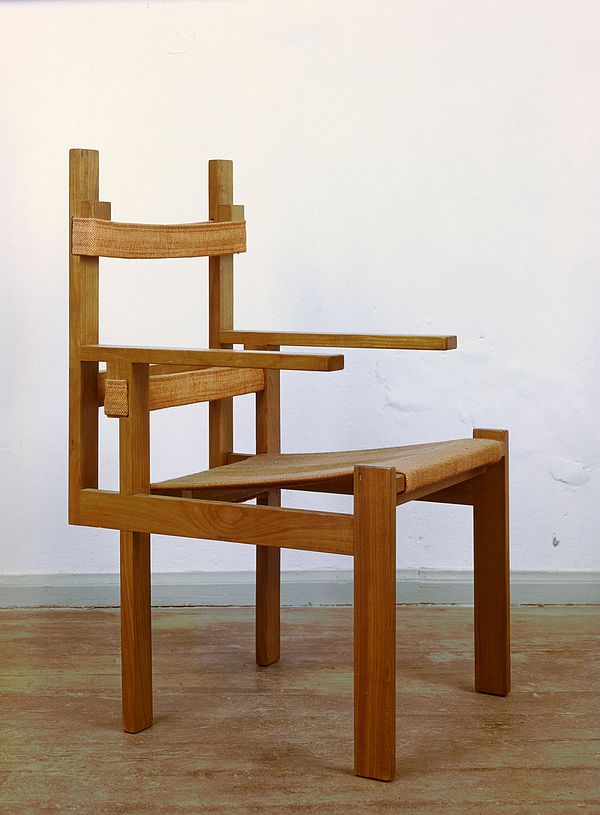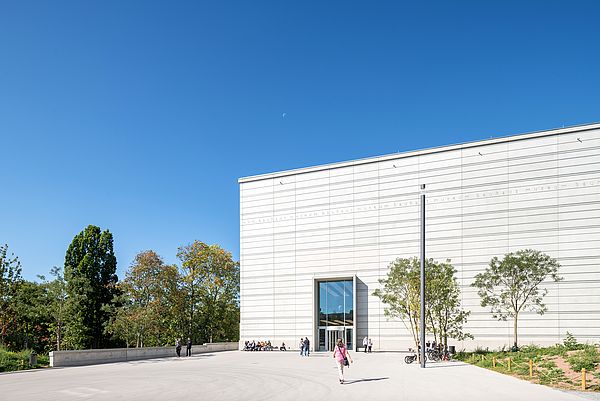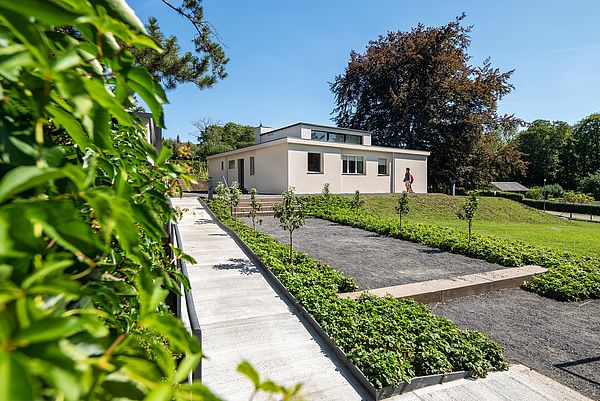Klassik Stiftung Weimar
The world’s oldest Bauhaus collection is located in Weimar, the birthplace of the Bauhaus. The core of the collection consists of a selection mainly made by Walter Gropius in 1925.

Headline
The collection, originally comprising 168 workshop pieces, has now grown to 13,000 objects. These include the famous table lamp by Wilhelm Wagenfeld and Carl Jakob Jucker, the teapot by Marianne Brandt, the slatted chair by Marcel Breuer, ceramics by Theodor Bogler and carpets by Gunta Stölzl and Gertrud Arndt as well as works by Paul Klee, Peter Keler and László Moholy-Nagy. The new Bauhaus Museum, which opens in 2019, stages these treasures in contemporary architecture and at an exciting location: With the choice of location north of the city centre, on the edge of the Weimarhallenpark and in the direct vicinity of the National Socialist "Gauforum", the Bauhaus Museum gains decisive impulses for its museum work that relate to the entire spectrum of the 20th century.

Headline
In a minimalist cube designed by the architect Heike Hanada, which is impressively illuminated at night, it shows the relevance of the Bauhaus for the present on 2,000 square metres of exhibition space. Based on the question "How do we want to live together?", which goes back to Walter Gropius, it links the history of Bauhaus with questions about the way of life of today and tomorrow.
The exhibition "The Bauhaus comes from Weimar" offers visitors many sensual experiences - for example in the stage space, which is inspired by the multimedia experiments of László Moholy-Nagy - as well as practical workshop experiences from bookbinding as in the Bauhaus era to 3D printing. Among other things, the museum explores the diverse educational approaches at the Weimar Bauhaus. For example, it deals with the standardisation and measurement of the "new man" and, using the example of the Haus Am Horn, it looks at how the Bauhaus wanted to improve living.

[Translate to English:] headline
In addition to the Bauhaus Museum, the Haus Am Horn in Weimar has been open to visitors since 2019. It is the first and only architecture realised by the State Bauhaus in Weimar. It was built in 1923 as a test house for the Bauhaus exhibition. The design came from the Bauhaus master Georg Muche, the construction was supervised by Adolf Meyer and Walter March from the Walter Gropius construction office. The Bauhaus workshops designed the interior decoration and thus presented for the first time how they envisioned contemporary living.
The building has been a UNESCO World Heritage Site "Bauhaus and its sites in Weimar, Dessau and Bernau" since 1996 and has been restored with great attention to detail. The new permanent exhibition gives visitors the original appearance of the single-storey building for the 1923 Bauhaus exhibition, without concealing the subsequent changeable history of its use. The kitchen garden, an essential component of the Bauhaus concept of self-sufficiency in healthy food, was also redesigned and a bed planted in an exemplary fashion.

Contact
Klassik Stiftung Weimar
Burgplatz 4
99423 Weimar
Opening times
Bauhaus Museum Weimar | "The Bauhaus comes from Weimar"
Stéphane-Hessel-Platz 1
99423 Weimar
Wed-Mo | 9.30-18
Haus Am Horn
Am Horn 61
99425 Weimar
T +49 (0)3643 – 545-400
E info(at)klassik-stiftung.de
Headline
The ideal companion for a visit to the Bauhaus Museum and Haus Am Horn is the Bauhaus+ app. In addition to exhibition tours for the Bauhaus Museum, it also includes an audio-visual tour of the experimental house with lots of additional information.
The Klassik Stiftung Weimar is the second largest cultural foundation in the Federal Republic of Germany and one of the most outstanding cultural and research institutions in Germany. With its more than 27 museums, castles, historic houses and parks as well as its collections of literature and art, it forms a unique ensemble of cultural monuments. Twelve of its properties are included in the UNESCO World Heritage List. The main focus of its collections and work is on Weimar Classicism, its after-effects on 19th century art and culture, as well as Modernism with a focus on Friedrich Nietzsche and Bauhaus.